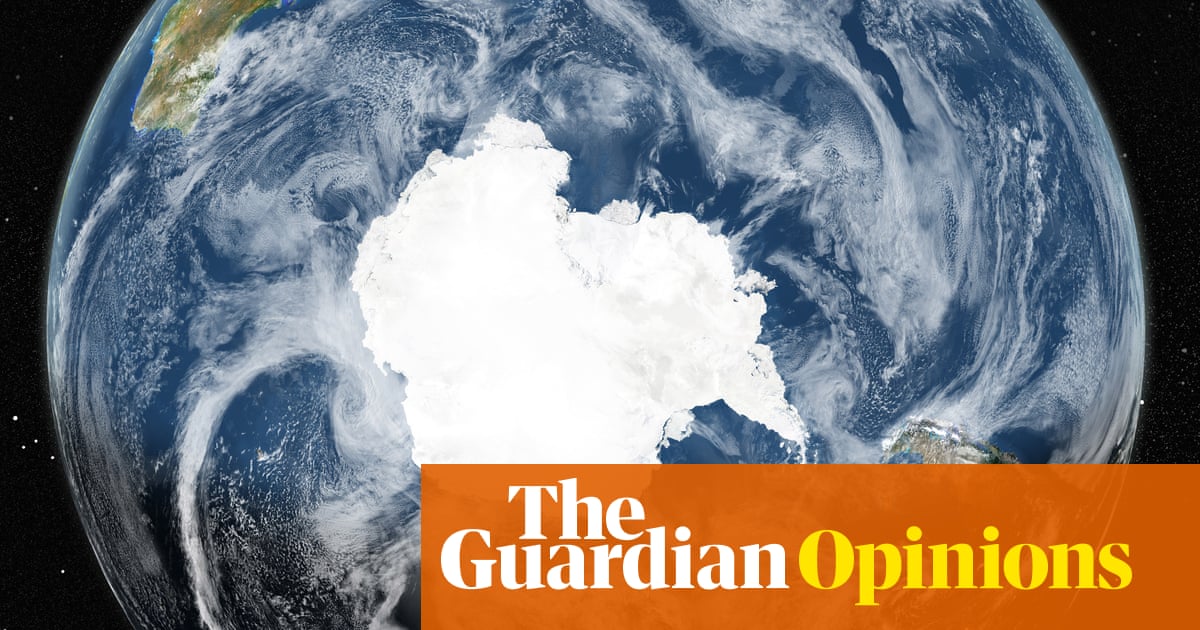
Climate scientists long thought that the interior of Antarctica might not be very sensitive to warming, but our research, published this week, shows a dramatic change.
In the past 30 years, the South Pole has been one of the fastest changing places on Earth, warming up more than three times faster than the rest of the world.
My colleagues and I argue that these warming trends are unlikely as a result of natural climate variability alone. The effects of human-made climate change appear to have worked in tandem with the significant influence that natural variability has in the tropics on Antarctic climate. Together they make warming of the South Pole one of the strongest warming trends on Earth.

The south pole is not immune to warming.
The south pole is located within the coldest region on Earth: the Antarctic plateau. Average temperatures range from -60 ℃ in winter to just -20 ℃ in summer.
Antarctic climate generally has a huge temperature range over the course of a year, with strong regional contrasts. Most of West Antarctica and the Antarctic Peninsula were warming up in the late 20th century. But the south pole, in the remote, high-altitude continental interior, cooled down until the 1980s.
Scientists have been tracking the temperature at the Amundsen-Scott South Pole Station, Earth’s southernmost meteorological observatory, since 1957. It is one of the oldest complete temperature records on the Antarctic continent.
Our analysis of data from the South Pole Weather Station shows that it has warmed by 1.8 ℃ between 1989 and 2018, changing most rapidly since the early 2000s. During the same period, warming in West Antarctica stopped suddenly and the Antarctic Peninsula began to cool.
One of the reasons for the warming of the South Pole was the stronger low pressure systems and the more stormy weather east of the Antarctic Peninsula in the Weddell Sea. With the clockwise flow around the low pressure systems, this has been transporting warm, moist air to the Antarctic plateau.
South pole warming linked to the tropics
Our study also shows that the ocean in the western tropical Pacific began to heat rapidly at the same time as the south pole. We found that almost 20% of year-to-year temperature variations at the South Pole were related to ocean temperatures in the tropical Pacific, and several of the warmest years at the South Pole in the past two decades occurred when the Western Western Pacific Ocean was also unusually warm.
To investigate this possible mechanism, we conducted a climate model experiment and discovered that ocean warming produces an atmospheric wave pattern that stretches across the South Pacific to Antarctica. This results in a stronger low pressure system in the Weddell Sea.

We know from previous studies that the strong regional variations in temperature trends are due in part to the shape of Antarctica.
The East Antarctic Ice Sheet, bordered by the South Atlantic and Indian Oceans, extends further north than the West Antarctic Ice Sheet in the South Pacific. This causes two clearly different weather patterns with different weather impacts.
More consistent and westerly winds around East Antarctica keep the local climate relatively stable, while frequent intense storms in the high-latitude South Pacific transport warm, humid air to parts of West Antarctica.
Scientists have suggested that these two different weather patterns, and the mechanisms that drive their variability, are the likely reason for strong regional variability in Antarctic temperature trends.
What this means for the South Pole
Our analysis reveals that extreme variations in south pole temperatures can be explained in part by natural tropical variability.
To estimate the influence of human-induced climate change, we analyzed more than 200 simulations of climate models with observed concentrations of greenhouse gases during the period from 1989 to 2018. These climate models show that recent increases in effect gases Greenhouses have possibly contributed about 1 ℃ of the total 1.8 ℃ of warming at the South Pole.
We also used the models to compare the recent warming rate with all possible 30-year south pole temperature trends that would occur naturally without human influence. The observed warming exceeds 99.9% of all possible trends without human influence, and this means that recent warming is extremely unlikely under natural conditions, although not impossible. The effects of tropical variability appear to have worked in tandem with the rise in greenhouse gases, and the end result is one of the strongest warming trends on the planet.

These climate model simulations reveal the remarkable nature of the south pole temperature variations. The observed temperature at the South Pole, with measurements dating back to 1957, shows 30-year temperature changes ranging from more than 1 ℃ cooling during the 20th century to more than 1.8 ℃ warming in the past 30 years.
This means that the temperature changes of several decades are three times stronger than the estimated warming by human-caused climate change of around 1 ℃.
The temperature variability at the South Pole is so extreme that it currently masks the human-caused effects. The Antarctic interior is one of the few remaining places on Earth where human-caused warming cannot be precisely determined, meaning it is a challenge to say whether the warming will continue or for how long.
But our study reveals that extreme and abrupt climate changes are part of the climate of the interior of Antarctica. They are likely to continue into the future, working to hide human-induced warming or to intensify it when natural warming processes and the human greenhouse effect work together.
-
Kyle Clem is a climate science researcher, Te Herenga Waka, Victoria University of Wellington